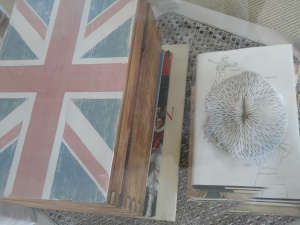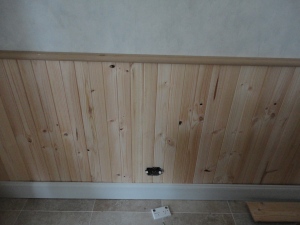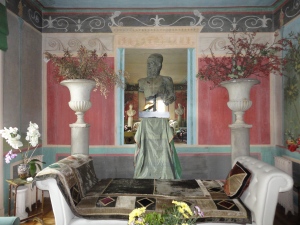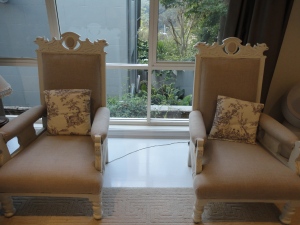One of life’s great mysteries, along with where the odd socks go, is why colour never looks the same on the wall as on the swatch. How many times have you painted a wall your dream colour only to find that it looks… disappointing? hideous? totally not what you thought it would look like?
The worst bit about this, aside from the effort of repainting, is the confusion. How do you know what is needed to get what you were looking for?
Here are some tips I’ve gleaned along the way that have really helped.
1. Colour is intensified on a wall.
Much of this is because the area of a paint swatch is tiny – and a wall is many thousand times larger. So you’ll be seeing many thousand times more of that colour – which alone will make it look stronger. It’s the different between wearing red nail varnish, and red from head to toe.

If you have a colour you like, go for a dilution – most paint stores can dilute any colour to half or quarter strength.

Alternatively, get a less ‘clean’ version of the colour – a slightly more grey version or a more creamy version (depending on the orientation of your room – see below) can knock the colour back enough to look great.
2. The orientation of the room will change the colour.
Just as the setting sun will burnish everything to a rosy glow, all lights cast their own colours. Therefore the direction that your windows face will alter the way the colour appears on the walls. If you face the sun, you will be bathed in warmer light, so yellows will look more yellow, and blues will appear less cold. If you face the (north in the northern hemisphere, south in Australia – this still confuses me, having been born in Europe) direction that never recieves direct sunlight, cold colours will appear colder, and a yellow will not appear so bright. I actually painted a warm cream in a room facing the sun and it looked lemon. In a room that recieves no direct sunlight, I love it!
In this room, you can see how cold the light is, and how fabulous the yellow looks with it.

This means a colour will also look different not only as the day progresses, but also under electric light – and again it depends which bulbs you have: flourescent light is a different shade to tungsten bulbs…
3. Reflected light changes the colour
Light bounces off surfaces and will alter the shades in your room. If you have a reddish floor (terracotta tiles, or reddish wood floors), they will cast a red glow on your walls and make reds appear stronger. They will also bring out the red undertones in other colours such as beige.
Light will also bounce off the things outside the window – if you face a red brick wall, you’ll face the red issue again.
4. There is no such thing as a ‘neutral’ neutral.
All colours have undertones, even beige. A beige can have a greenish look, a pinkish look and so on. And this will be emphasised by the type of sunlight, the reflected light and so on.

The room above looks drab – this is because the walls are a yellowish beige, while the sofa has a pinkish undertone (and the carpet has a purplish beige colour to it). The cushions have a greenish hue. This will has the effect of making the room feel slightly ‘off’. It would be better to replace the wall colour with something different, such as a soft grey and the cushions with a bit of colour – maybe a blue grey to pick up the walls.
The blue below has some yellow in it which warms it a little.

This bathroom is painted a much ‘cooler’ colour.

6. Personal preferences
Some people just love lots of colour and thrive on it, others find it overwhelming. Most people tire of strong colour and strong pattern – so that’s fine for an outfit you only wear for a day – but maybe not for a chair that you’re going to sit on for years, day after day, night after night. If you want strong colour, the cheap and easily-changeable (such as cushions and vases) are my vote. Wall colour is actually inexpensive to change if you’re doing it yourself, but it is a hassle.

This room (which is actually the office of a colour consultant) would drive me crazy as the yellow and blue on the curtains are so strong, and there seems no respite from the turquoise (which I would love as some gentle accents in the room).

There – much better. Which goes back to the size issue – when you have a huge area of one colour, it will feel much more overwhelming.
5. Finally, the other items in the room will affect how the colour looks
All colour is relative. It seems that none are absolute – what is next to one thing can radically alter the way the colour appears (just like red lipstick can make your skin look paler). But that is such a long story – it will have to wait for another post.
If you want help choosing colours for your home, call me for a consultation on 0424 617755.
Leave a Response »













































































